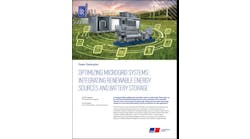By Elisa Wood
Political leaders push energy efficiency when electricity rates spike, then drop it like a hot potato when prices fall. So how long will the current interest last?
Three reports out this week indicate power prices will not ease any time soon. Indeed, forces are in place to only push costs higher.
One force is the renewable portfolio standard, according to Standard & Poor’s Ratings Services in “The Race for the Green: How Renewable Portfolio Standards Could Affect U.S. Utility Credit Quality.” Half of the states, representing 40% of electric load, now require that a percentage of power come from green energy. S&P warns that the requirement is moving “squarely away from least-cost procurement and toward acquiring often above-market renewable generation in unprecedented quantities.” The standards are in their infancy, so the price impact is still to come in most states, says S&P.
Meanwhile, the Natural Gas Council sent a report to Congress warning that expected restrictions on carbon emissions are likely to drive up demand for clean-burning natural gas by 20%. This is not good news for electricity prices. Most new power plants in the US are built to burn gas. Higher demand for gas could easily mean higher prices for electricity. http://www.ngsa.org
And finally, Oak Ridge National Laboratory found in a study that plug-in hybrid cars may put more pressure on the electric grid than previously thought. The nation may have to build as many as 160 new power plants – a costly endeavor – if everyone plugs in their cars for recharge right when they get home from work. http://www.ornl.gov/info/press_releases/get_press_release.cfm?ReleaseNumber=mr20080312-02
These price pressures, combined with the growing treatment of efficiency as a market commodity–not a subsidy-driven service — indicate efficiency may have finally found a solid foothold. It may be a blip no more.
Visit energy writer Elisa Wood at www.realenergywriters.com and pick up the free Energy Efficiency Markets newsletter and podcast.





